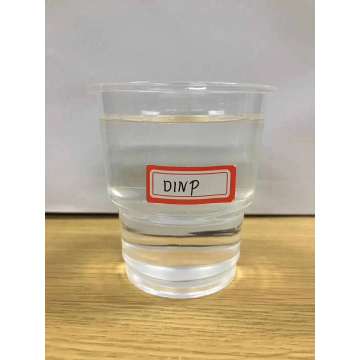Phthalate esters are the most common plasticizers (also known as plasticizers), including di (2-ethylhexyl) phthalate (DEHP); Diisononyl phthalate (
DINP); Diphenyl phthalate (DPHP); Dimethyl phthalate (DMP); Diethyl phthalate (DEP); Dibutyl phthalate (DBP); Dipentyl phthalate (DPP); Dihexyl phthalate (DHXP); Di-nonyl phthalate (DNP); Diisobutyl phthalate (DIBP); Dicyclohexyl phthalate (DCHP); Di-n-octyl phthalate (DNOP); Butyl benzyl phthalate (BBP); Di (2-methoxy) ethyl phthalate (DMEP); Di (2-ethoxy) ethyl phthalate (DEEP); Di (2-butoxy) ethyl phthalate (DBEP); Bis (4-methyl-2-pentyl) phthalate (BMPP), etc. Diethylhexyl phthalate (DEHP) is the most widely used in the
Plasticizer industry, followed by dibutyl phthalate (DBP). The data shows that this type of substance has certain reproductive toxicity and is the culprit causing male reproductive problems.
The sources of phthalate plasticizers in food include: firstly, the migration of plastic containers, pipes, packaging materials, and sealing materials that come into contact with food into the food; The second is the impact of "plasticizers" in the environment on food, such as the presence of "plasticizers" in soil and water that may enter the food chain and affect food. In addition, plasticizers may also be illegally added to food additives, thereby contaminating food, such as the 2011 Taiwan plasticizer contamination incident. To prevent such incidents from occurring, China has established limits on phthalate substances in food and food additives. However, these limit values are generally consistent with migration limits, indicating that the limit values for food and food additives may be based on migration limits. Therefore, the establishment of limits for such substances in food is still based on the conclusion of the risk assessment of food contact material migration limits.
The regulations on food contact materials in foreign countries are important references for the formulation of corresponding standards in China. Studying their risk assessment of phthalate esters is of great reference significance for China. The following will introduce the risk assessment and conclusions of phthalate substances in the European Union, the United States, Japan, and Canada.
EU Risk Assessment Information and Conclusion on Phthalate Esters
In 2005, EFSA conducted a risk assessment of five phthalate esters in food contact plastics, including di (2-ethylhexyl) phthalate (DEHP), butyl benzyl phthalate (BBP), dibutyl phthalate (DBP), diisocentyl phthalate (DIDP), and diisobonyl phthalate (DINP). These five substances have been approved for use in food contact with plastics. In 2019, EFSA updated the risk assessment report for the above substances.
According to the effects of five phthalates on the reproductive system, four of them (DBP, BBP, DEHP, and DINP) have a key role in reducing fetal testosterone levels. Based on this hazard, EFSA grouped these four substances together and set the daily allowable intake (TDI) of these substances to 50 µ g/kg bw (DEHP equivalent). In addition to this value, EFSA has also set TDI values for each of the four substances mentioned above. In addition, DIDP does not affect fetal testosterone levels at the assessed intake levels. Based on the impact of DIDP on the liver, EFSA sets the TDI of DIDP to 150 µ g/kg bw.
According to the new evaluation report released by EFSA, the dietary exposure of the general consumer group to DBP, BBP, DEHP, and DINP is 7 µ g/kg bw, which is approximately one seventh of TDI. The dietary exposure of high consumption population is 12 µ g/kg bw, which is approximately one fourth of TDI. For DIDP, the dietary exposure of high consumer groups is 1500 times that of TDI. Therefore, these five substances have no impact on public health.
Risk assessment information and conclusions for phthalate esters in the United States
In the United States, additives that can be used for food contact materials belong to indirect food additives. At present, phthalate ester substances that have been approved as indirect food additives through evaluation include: dihexyl phthalate (DHXP), diisopropyl phthalate (DINP), butyl benzyl phthalate (BBP), dicyclohexyl phthalate (DCHP), and diphenyl phthalate (DPHP).
The assessment results of the US Environmental Protection Agency (EPA) are consistent with those of the European Union, stating that di (2-ethylhexyl) phthalate (DEHP) has both animal reproductive and developmental toxicity. There is currently no data on the chronic, reproductive, developmental, or carcinogenic effects of DEHP on humans.
High doses of oral DEHP (5-10 g) can cause gastrointestinal pain in humans. Animal experiments have shown that chronic inhalation of DEHP increases lung and liver weight, and oral contact can affect the development and reproductive function of rats and mice. In addition, a study by the National Toxicology Program (NTP) of the United States shows that oral DEHP can increase the incidence rate of liver cancer in rats and mice.
The EPA lists six types of phthalates, including di (2-ethylhexyl) phthalate (DEHP), butyl benzyl phthalate (BBP), diethyl phthalate (DEP), dibutyl phthalate (DBP), dimethyl phthalate (DMP), and dioctyl phthalate (
DOP), as priority controlled toxic pollutants.
The EPA has classified DEHP as a B2 carcinogen and may cause cancer. List butyl benzyl phthalate (BBP) as a Class C carcinogen, which may be carcinogenic to humans. Dibutyl phthalate (DBP) is classified as a Class D carcinogen and cannot be classified as carcinogenic to humans.
In addition, the FDA has released a risk assessment report on di (2-ethylhexyl) phthalate (DEHP) in medical PVC.
Risk assessment information and conclusions on phthalate substances in Japan
In 2009, the Japan Food Safety Commission (FSCJ) conducted a risk assessment of six phthalate esters in food contact plastics, and released risk assessment reports from 2013 to 2016. Six types of phthalate esters include diisocentyl phthalate (DIDP), diisocentyl phthalate (DINP), di-n-octyl phthalate (DNOP), dibutyl phthalate (DBP), di (2-ethyl) hexyl phthalate (DEHP), and butyl benzyl phthalate (BBP).
According to the risk assessment report released by the Japan Food Safety Commission, the conclusion of the risk assessment for six phthalate esters is as follows: DIDP: Currently, there is no literature data or biological monitoring data on the content of DIDP in food, beverage water, and house dust in Japan, so it is not possible to calculate the daily intake of DIDP in Japanese people. DINP: Based on known literature data, the daily intake of DINP among Japanese adults is estimated to be 0.4 µ g/kg bw (average estimate); DNOP: Using literature data related to the detection concentration of DNOP in food, air (considering particulate matter in the air), and water, the maximum estimated daily intake of DNOP in Japanese people is 0.24 μ G/kg bw; DBP: By calculating the cumulative concentration of DBP in beverages, indoor air, food, and house dust, the daily intake of adult DBP is 5 μ G/kg bw; DEHP: Based on the concentration of DEHP in environmental media (food, air, cosmetics, etc.), the daily intake of DEHP in 1-year-old children is estimated to be 5.7-6.1 μ The daily intake of DEHP for the entire age group is 1.8-12 g/kg bw μ G/kg bw; BBP: Based on literature data related to the detection concentration of BBP in food, air, beverage water, and house dust, the daily intake (average estimated) of BBP for Japanese adults is 0.11 μ G/kg bw. The daily intake of the other 5 substances, except for DIDP, is lower than the allowable daily intake. Therefore, it can be inferred that the above 5 substances will not have a significant impact on public health at present.
Risk assessment information and conclusions for phthalate esters in Canada
In 1994, the Canadian Department of Environment and Health prioritized the evaluation of DEHP and continued to conduct scientific status reports and cumulative risk assessments on DEHP and other phthalate substances. In August 2015, the Canadian Department of Health released four scientific status reports and cumulative risk assessment recommendations that comprehensively considered 14 phthalate substances. Canada proposes to use the Cumulative Risk Assessment (CRA) method to evaluate certain phthalates in the group, continuously collecting hazard information about an additional 14 phthalate substances (a total of 28). In October 2017, the Canadian Department of Environment and the Department of Health released a draft screening assessment for phthalate esters. Canada updated the evaluation results in 2020 and 2021.
In 1994, the Canadian Department of Environment and Health conducted an evaluation of DEHP and concluded that DEHP was harmful to health. DEHP was added to the list of toxic substances under the Canadian Environmental Protection Act (CEPA 1999 S.C. 1999). According to this assessment, Canada has imposed restrictions on the use of DEHP: prohibiting its use in cosmetics; Restrict its use in medical equipment; Restrict its use in children's toys and care products.
In December 2020, the Canadian Department of Environment and Health released risk assessment results for 15 phthalate esters. The final screening evaluation concluded that the 14 substances in the original phthalate substance group (DMP, DIBP, CHIBP, BCHP, DCHP, DBzP, B79P, DMCHP, DIHepP, BIOP, B84P, DINP, DIDP, and DUP) are harmless to the environment or human health (as defined in Section 64 of the Canadian Environmental Protection Act CEPA 1999 S.C. 1999, c. 33), while DEHP is harmful to human health and the environment. Although B79P is harmless to human health at current exposure levels, if exposure increases, B79P may have worrying effects on human health. In addition to B79P, there are 19 other substances that are also dangerous, so increasing exposure may have an impact on human health or the environment. The other 19 substances are DMP, DIBP, CHIBP, BCHP, DCHP, DBzP, DMCHP, DIHepP, BIOP, B84P, DINP, DEP, DPrP, DBP, BBP, DnHP, 79P, DIOP, and DnOP.
On June 18, 2021, Canada updated the evaluation results of DEHP. The concentration of DEHP in Canadian urine (measured as the sum of DEHP metabolites) is much lower than the biological monitoring equivalent threshold based on the daily tolerable intake of Health Canada. Biomonitoring data shows that since the implementation of risk management measures, the risk of exposure to DEHP among Canadians has decreased, with a reduction of at least twice compared to the dietary exposure estimates proposed in the 1994 assessment. It is recommended to continue incorporating DEHP metabolites into the Canadian Health Measures Survey to verify that risk management measures continue to be effective in reducing exposure to DEHP among Canadians.

![]() April 15, 2024
April 15, 2024




